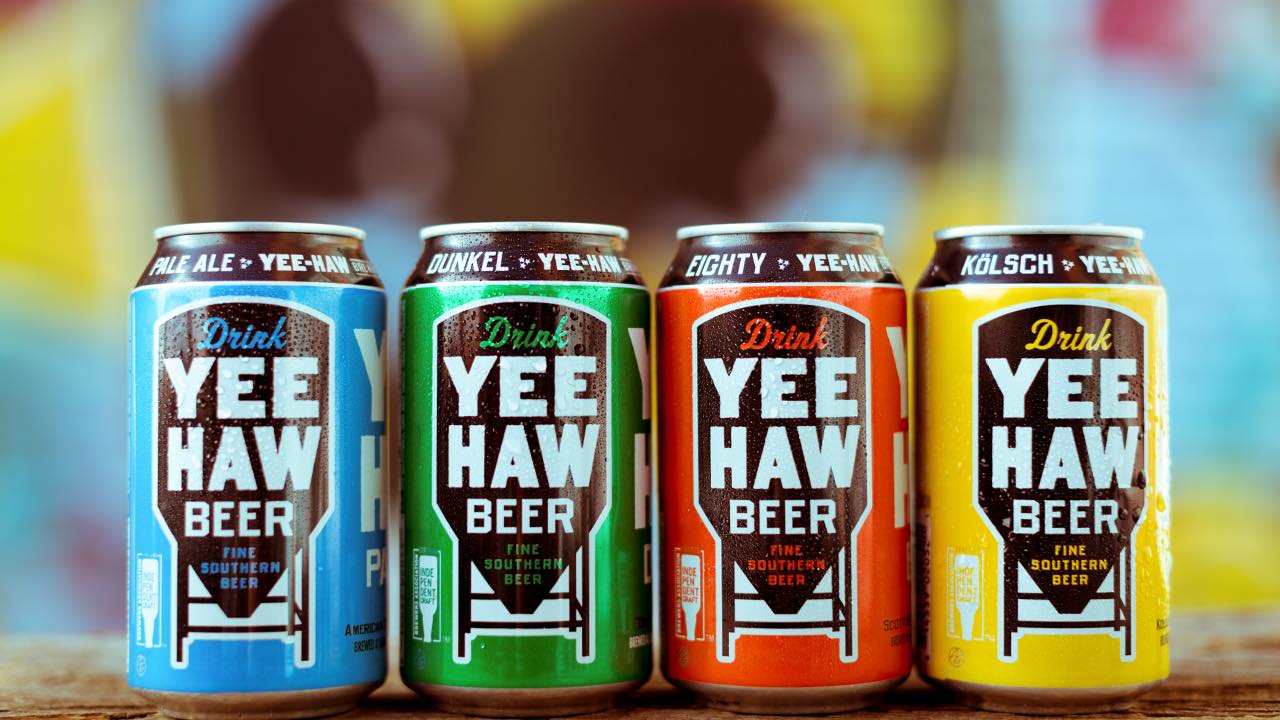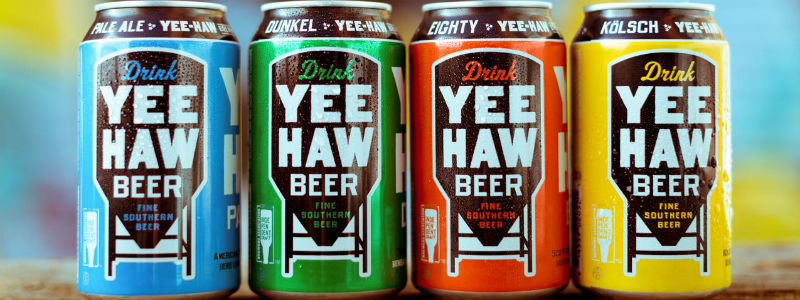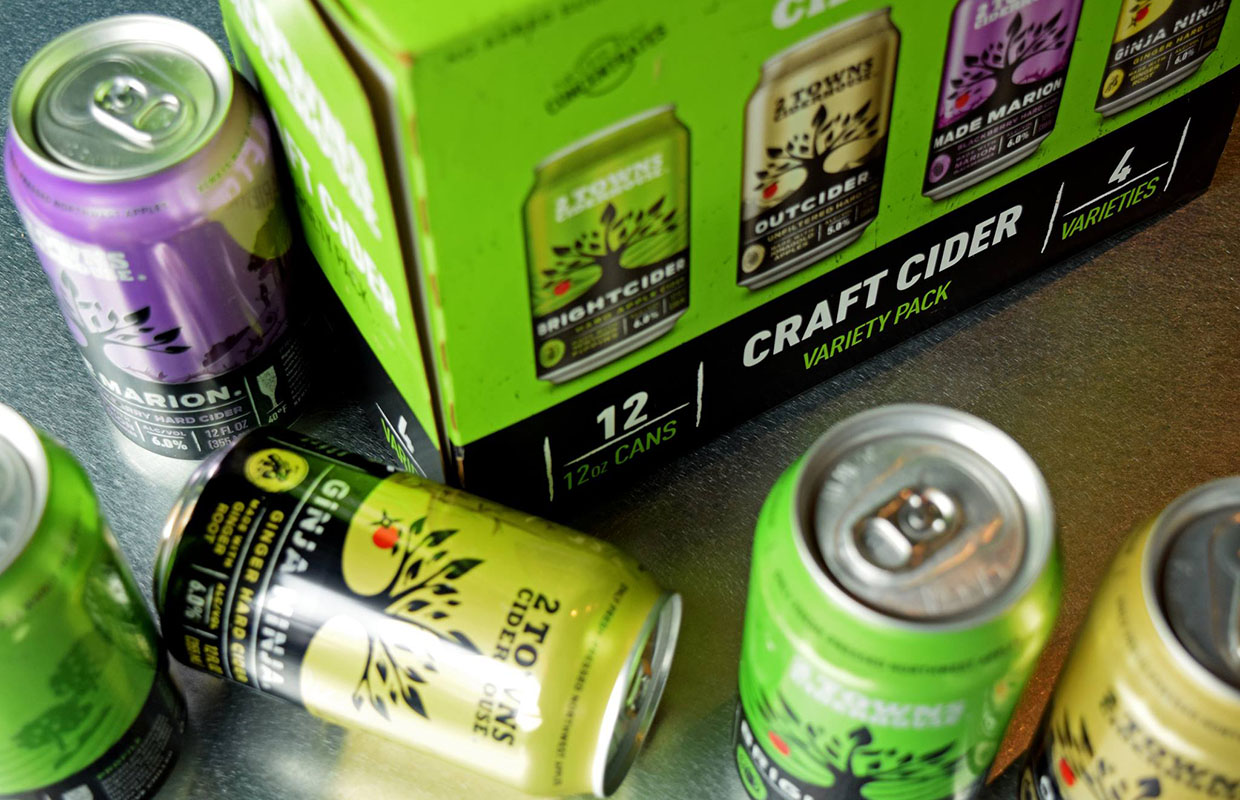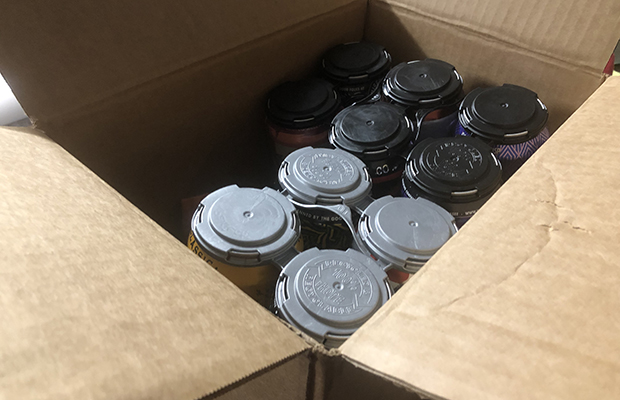
As cans have become more and more prevalent, breweries are having to come to a decision on how to properly address the labeling of the can. Options can abound. One such option is ordering pre-printed cans. It can save on time on the back end of packaging since there is no need to run a labeling machine, but figuring out order numbers and working the logistics and storage can be a factor.
And the aesthetic to the product is a drawing point as well.
“We really wanted to keep the billboard effect that our six-pack holders had for us,” said YeeHaw‘s Cris Ellenbrecker. “The only benefit we really got with going pre-printed was that we can switch from using a shroud case to paktechs pretty easily without losing any billboard affect.
“I think a lot of that has to do with our basic one color label design that just states our brewery name, and the type of beer it is.”
Ecliptic Brewing said they use a 12 oz printed matte beer cans and use printed cans for their Starburst IPA and Quasar Pale Ale.
The Portland, Oregon-based brewery started out using shrink-wrapped cans but transitioned to a generic can that they labeled post filling. Packaging Manager Alaric Lawrence noted they switched to a labeled can because the shrink-wrapped cans tended to jam up in the depalletizer and in the canning line. 
“The labeled cans were a nice way to start with our seasonal brands because it enabled us to transition between seasonal bears without the financial commitment it takes for printed cans,” he said. “The negative aspect of labeled cans was the additional cost per can from the label itself to the additional staff member needed to visually check each can as it got labeled.
“I don’t think we will use labeled cans very often going forward, we have outgrown their effectiveness. It just takes too much time and labor to have large canning runs of labeled cans.”
Dust Bowl Brewing moved to the printed cans for their Taco Truck Lager because it’s a high volume, year-round style.
“Although the minimum order is significantly more than pressure sensitive, we wanted a more elevated look, which we believe is important and expected with a year-round product,” said marketing and PR Manager Michelle Peterson. “With pressure sensitive, you can produce labels quickly. This works well in a rapidly changing craft beer environment.
“The printed cans take several months, but the results are well worth it when the product is a high-volume mover for you. We think it’s vital to show both the consumer and our wholesalers our level of commitment from the quality of the beer all the way to the packaging.”
Peterson said they are hoping to increase can production in the year-round segment, and expect those cans to be printed.
“I would anticipate pressure sensitive labels to continue in our specialty categories,” she said. “You have to be careful that your packaging cost does not impact the overall price to the consumer.”




4 Trackbacks / Pingbacks